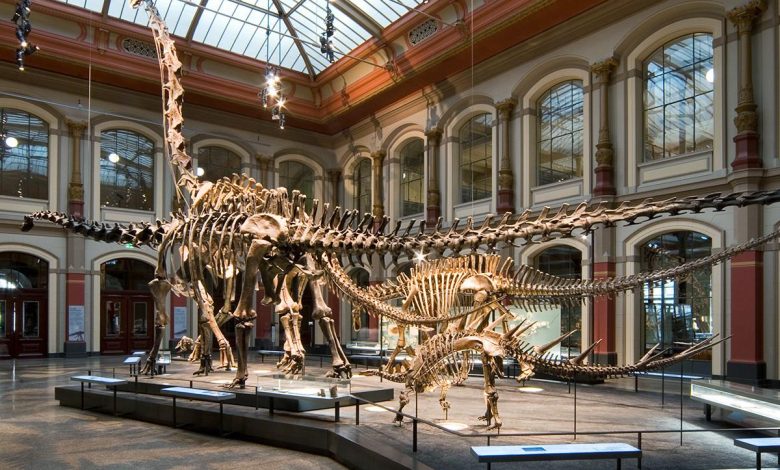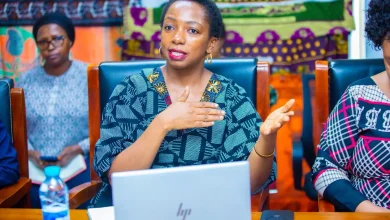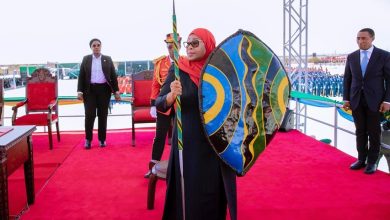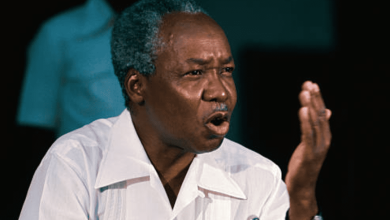Ex-MP demands restitution for Tanzania’s lost Dinosaurs

LINDI: Former Tanzanian lawmaker and environmental activist Riziki Saidi Lulida still remembers the first time she saw the towering replica of a dinosaur from her homeland (not in Africa, but in a Berlin museum).
“It was taken from Lindi, from our soil,” she said. “They carried it piece by piece for more than a hundred kilometers, and some of our people died doing it. But no one in Lindi has ever benefited.”
More than a century after German colonial explorers unearthed the Tendeguru fossils (among the world’s richest dinosaur discoveries) debate is rising in Tanzania over restitution, profit-sharing and recognition for the communities that bore the cost.
Lulida, who served in parliament’s natural resources committee in the mid-2000s, has become one of the loudest voices pushing for Germany to compensate or at least partner with Tanzania in developing the Tendeguru site as a heritage and tourism center.
“Germany built a museum and profits from the fossils,” she told a local gathering recently. “But Tendeguru village still has no proper roads, no clean water, no schools. This is injustice.”
Between 1906 and 1913, German scientists led by Werner Janensch and Eberhard Fraas excavated thousands of fossils in southern Tanzania, then part of German East Africa. The remains (including those of the massive Brachiosaurus brancai, later renamed Giraffatitan brancai) were shipped to Berlin and became the centerpiece of the Museum für Naturkunde, one of Europe’s most famous natural history museums.
Today, the museum attracts hundreds of thousands of visitors a year, while the original excavation site in Tendeguru, Lindi Region, lies overgrown and largely forgotten.
“Germany has acknowledged colonial injustices in Namibia,” Lulida said, referring to Berlin’s 2021 deal to pay reparations for atrocities against the Herero and Nama peoples. “Why not Tanzania, whose natural treasures were taken too?”
The Tanzanian government has in recent years hinted at interest in seeking repatriation of cultural and natural heritage removed during colonial rule, but no official claim over the Tendeguru fossils has been filed.
Local leaders from Lindi say the issue goes beyond ownership (it is about economic justice).
“If Germany cannot return the fossils, they should at least share the revenue and support the local area,” said Lulida. “We are not asking for charity, but partnership — resource sharing.”
She points to the surrounding villages (Matapwa, Mpingo, Mnyangara and Mangaranganda) where residents live in poverty despite sitting on one of Africa’s most important paleontological sites. “Not a single coin comes back to them,” she said.
A fight rooted in conservation
Lulida, nicknamed “Mama Selous” for her advocacy around the Selous ecosystem, began her activism after visiting Germany in the late 2000s as part of a Tanzania National Parks (TANAPA) delegation. Seeing the fossil displays in Berlin, she says, was a moment of awakening.
ALSO READ: How ‘My Tanzania’ Roadshow attracted tourism in Europe
She returned home determined to campaign for Tendeguru’s recognition as a conservation and tourism area, forming alliances with environmentalists including Dr. Jane Goodall, who later supported her conservation efforts in Lindi.
“Tendeguru could be our southern Serengeti,” Lulida said in an interview with Media Wire Express. “It is a place of history, of nature, of science – yet no one invests there.”
Despite efforts to secure land titles and launch the Tendeguru Wildlife Conservation initiative, she says bureaucratic hurdles and political resistance have slowed progress. “Some officials prefer silence,” she said. “Maybe they are afraid of what restitution would mean.”
Beyond fossils, Lulida says Lindi’s environment is also under threat. Once home to elephants, buffalo and leopards, much of the Tendeguru forest has been cleared for farming and grazing. Elephant corridors linking Mozambique, Ruvuma, Selous and Serengeti have disappeared, fueling rising human-wildlife conflict.
“When elephants cannot pass through, they invade farms. People blame the animals — but it is we who closed their paths,” she said. “Human-wildlife conflict is man-made.”
She argues that protecting these corridors could help restore the region’s ecological and tourism value. “Germany and Tanzania can cooperate on this, just as they cooperate in conservation elsewhere,” she said.
Scholars say the Tendeguru fossils remain a scientific treasure that transformed global understanding of the Jurassic era. Yet for Tanzanians, the site is a reminder of colonial extraction — where local labor and resources built European institutions while leaving the source communities behind.
Berlin’s Museum für Naturkunde has acknowledged its colonial-era collections and said it is open to dialogue about “shared heritage.” But so far, talks with Tanzania have been limited to academic collaboration, not restitution or profit-sharing.
For Lulida, that is not enough.
“Every year, tourists fly to Germany to see our dinosaurs,” she said. “Why not bring them here, to see where it was born?”
She wants the Tanzanian government to demand that Germany fund educational and conservation programs in Lindi, or sponsor local students to study paleontology and environmental management abroad. “That would be the true restitution,” she said.
At 60, Lulida knows she may not see the results herself. “I will not benefit,” she said quietly. “But our children will. I will fight until I enter my grave.”
For her, Tendeguru is not just about bones buried in history — it is about a nation reclaiming dignity.
“Why was the largest dinosaur in the world found in Lindi?” she asked. “Because this land is rich. We must make sure its people benefit from that richness.”





